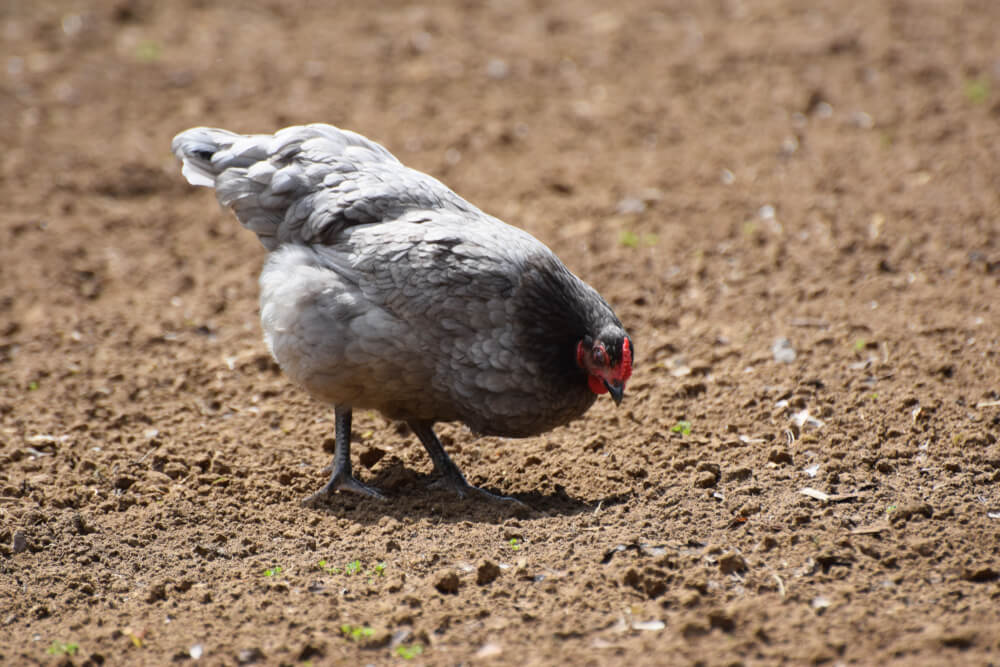The Ultimate Blue Andalusian Chicken Breed Guide – Meet Spain’s Elusive Yet Exquisite Birds!
Welcome! This article contains affiliate links, meaning I get a commission if you decide to make a purchase through my links, at no extra cost to you.
It’s our pleasure to introduce you to the Blue Andalusian chicken breed! It’s Spain’s silver-blue supermodel with feathers. These mysterious Mediterranean marvels strut beautifully, their metallic plumage shimmering like liquid mercury in the sunlight. Blue Andalusians are part acrobat, part egg-laying machine, part genetic puzzle, and as magnificent as they are rare. They’re also elegant, athletic, and packed with enough personality quirks to keep even seasoned chicken keepers guessing.
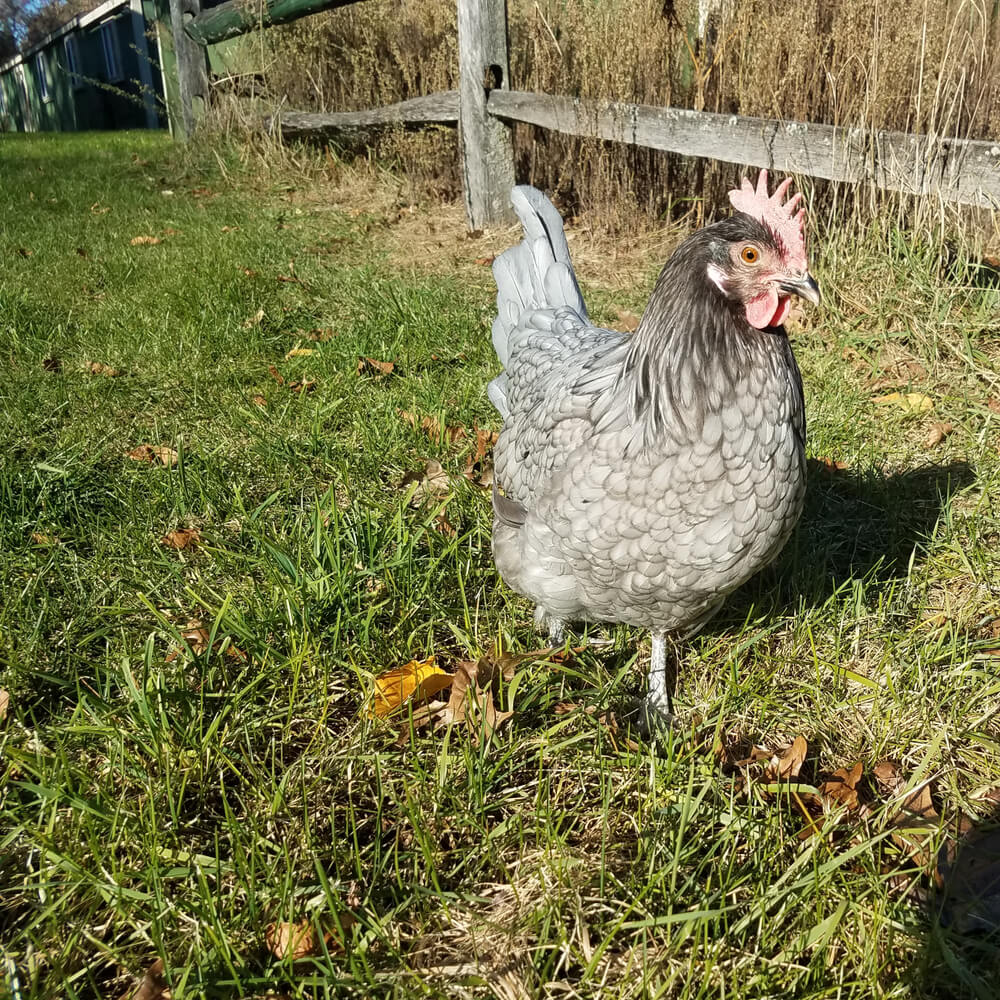
Sound intriguing?
Then let’s unravel one of poultry’s most captivating mysteries!
Blue Andalusian Overview
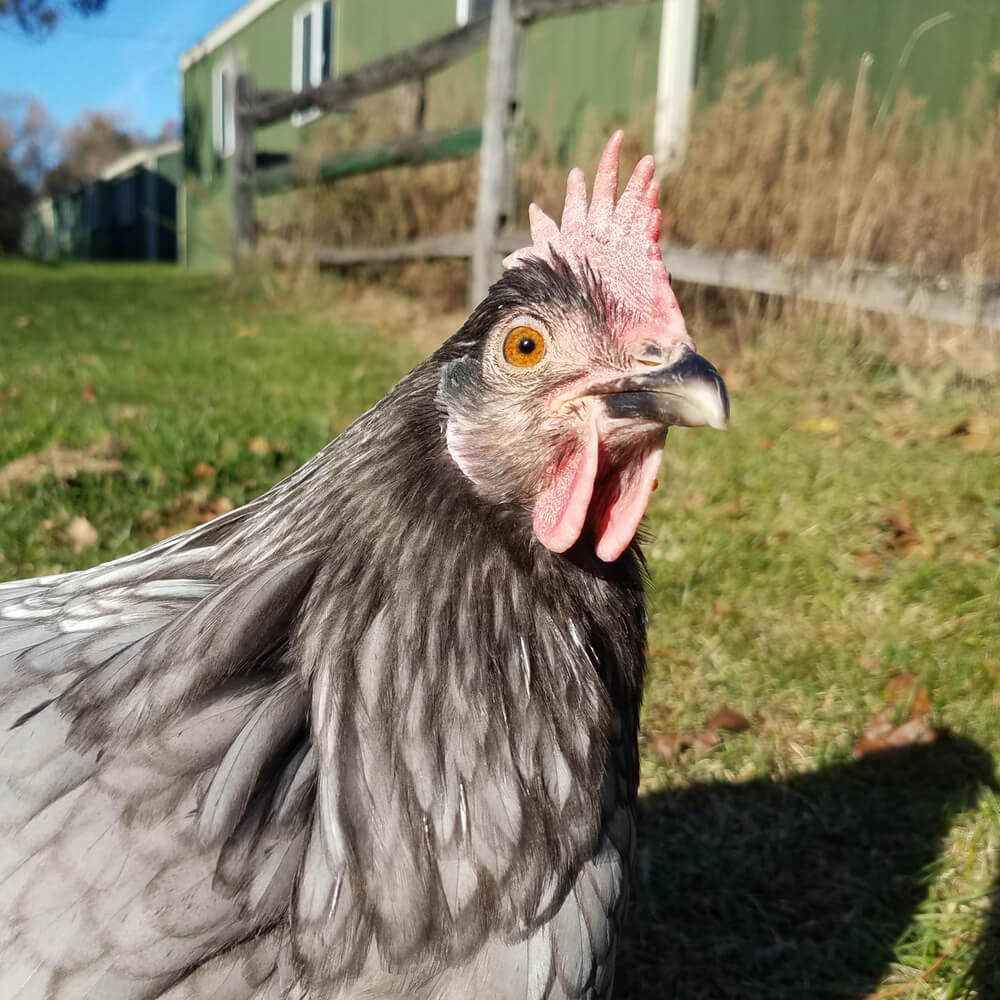
The Blue Andalusian is a sleek, silver-blue beauty. Born from ancient Andalusian stock and perfected by Victorian breeders obsessed with that elusive blue gene, these hardy birds combine Old World elegance with New World practicality. They’re active foragers who despise confinement but reward patient keepers with consistent production and striking, lace-patterned plumage that shimmers like polished steel.
| Origin: | Andalusia, Spain. |
| Lifespan: | 5 to 8 years. |
| Cost: | They are relatively inexpensive considering their rarity. Expect to pay $15 to $25 per chick (varies by hatchery). |
| Rooster Weight: | 7 pounds. |
| Hen Weight: | 5.5 pounds. |
| Temperament: | Active and flighty, difficult to contain, likes to free range. Friendly in nature and curious, especially towards people. |
| Appearance: | Blue (which is really more like a pretty gray) laced plumage. 20 to 28 inches tall, upright stance. White earlobes. Single red comb. |
| Uses: | Eggs, dual-purpose, exhibition. |
| Egg color: | White. |
| Egg production: | 160 to 200 eggs per year. Excellent winter layers. |
| APA Approved: | Yes – admitted to the American Poultry Association Standard of Perfection in 1874. |
The table above should help you become familiar with the Blue Andalusian breed. But – there’s also plenty more. Consider the following.
Read More – 18 Friendly Chicken Breeds Perfect For Mixed Flocks – No More Farmyard Brawls Or Coop Drama!
Origin And History
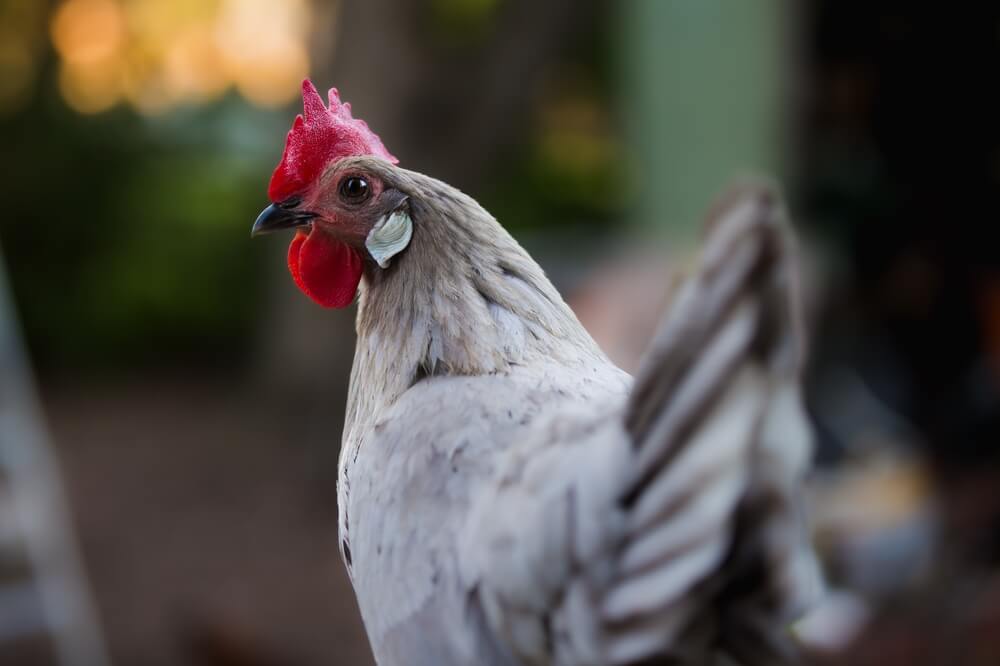
Among all of the birds I’ve studied, the mighty Blue Andalusian was the trickiest to track down! Their history is shrouded in mystery, containing several riddles and enigmas. It all goes back a few centuries.
Imagine this scenario. Centuries ago, in sun-baked Andalusia, southern Spain, local chickens pecked through olive groves, long before anyone dubbed them “Blue Andalusians.”
The municipality of Utrera, situated in the heart of Andalusia, is considered the homeland of the breed. Nobody knows their exact origins. But these gorgeous birds likely descended from Black Castilian landrace chickens. Their signature slate-blue plumage was likely the result of crosses between black and white birds, possibly due to natural genetic mutations.
The plot thickens in the mid-1800s. Blue chickens from Andalusia arrived in England by 1851, likely shipped through ports like Cadiz or Jerez de la Frontera. Meanwhile, in regions like Cornwall and Devon, locals were already experimenting with crosses of black and white fowls, resulting in blue chickens similar to the imports.
Victorian bird enthusiasts (obsessed with crafting the perfect blue chicken) eventually transformed Spain’s humble farmyard fowl into a symbol of poultry royalty. They discovered that crossing black and white birds produced the coveted slate-blue color, caused by a dilution gene that shimmers like chain mail.
Through continued selective breeding, they created the “international” Blue Andalusian, featuring its distinctive blue-laced plumage, which first showcased at London’s Baker Street show in 1853.
By 1874, the breed had earned a place in the American Poultry Association’s Standard of Perfection.
Today, the Blue Andalusian is a rare gem, listed as “Watch” by The Livestock Conservancy. Its stunning plumage and rich history make it a breed worth preserving.
Read More – Our Top Ten Best Tips For Raising Happy Hens, Chickens, And Roosters!
What Are Blue Andalusian Chickens Used For?
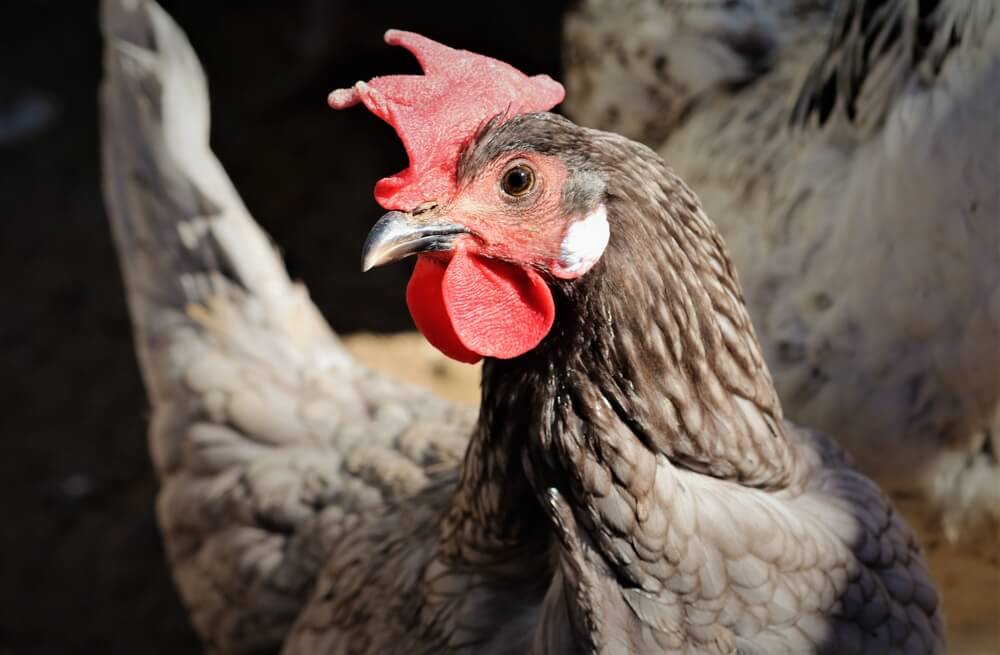
Homesteaders fall head over heels for their gorgeous slate-blue plumage, which catches the light like polished pewter. These birds are walking art pieces that happen to lay fantastic white eggs with rich, creamy yolks that make bakers swoon.
Their high-octane energy makes them incredible foragers. They’ll scour every inch of your yard, turn bugs and weeds into premium protein, and offer endless entertainment with their athletic antics. Think of Blue Andalusians as your personal pest control team, which also happens to look stunning.
But here’s the catch. Blue Andalusians are the divas of the poultry world when it comes to reproduction. They’re notoriously terrible mothers who abandon their nests faster than you can say “broody hen.” Expect to use incubators or foster moms from more reliable breeds.
These birds are also flight risks in the most literal sense. They’re flighty, skittish, and about as fond of human handling as cats are of water baths. Blue Andalusians prefer admiration from a respectful distance.
However, the real headache with Blue Andalusians is breeding. Maintaining their blue color is like trying to solve a genetic puzzle while blindfolded. The blue gene is unstable, so you’ll get a mixed bag of offspring ranging from black to white to splash patterns. Only about half will display the coveted true blue plumage that makes this breed so special.
Health And Lifespan
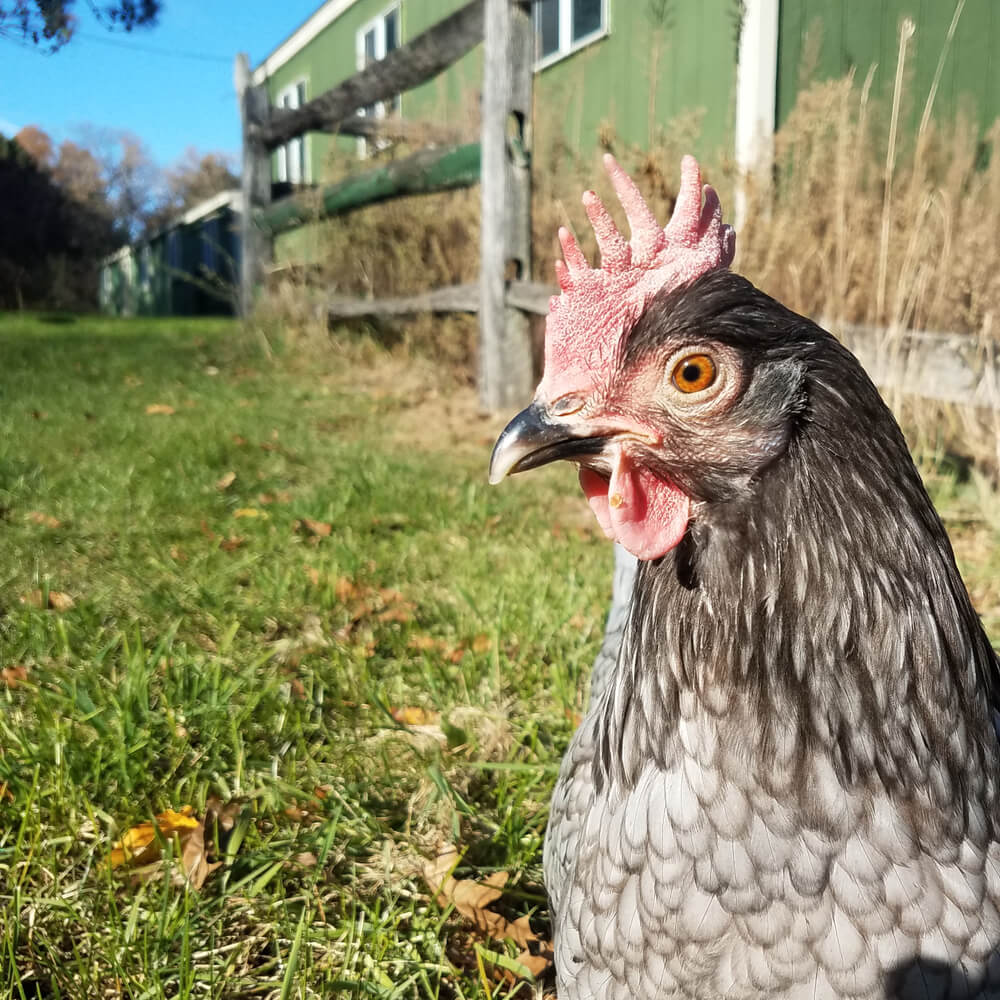
Blue Andalusians typically live anywhere from 5 to 8 years, which is a typical lifespan for Mediterranean breeds. The good news? There are no known health afflictions particular to this breed. These are naturally hardy birds that evolved in the sunny Spanish countryside.
However, there’s a catch. Since being bred primarily for egg production, this breed has an increased risk of becoming egg-bound and a shorter lifespan compared to other chicken breeds. Their high-performance laying can sometimes work against them.
Andalusian chickens are generally hardy but may be prone to common poultry ailments, such as respiratory infections or parasites.
Keep their coops well-ventilated and dry, especially since Blue Andalusians prefer warmer climates. Watch for the usual suspects, like chicken bumblefoot, mites, lice, and worms.
On the plus side, Blue Andalusians maintain active foraging lives, which helps keep them healthier than more sedentary breeds.
Read More – 21 Best Garden Crops To Grow As Chicken Food – Fruits, Veggies, Herbs & Flowers
Food And Water
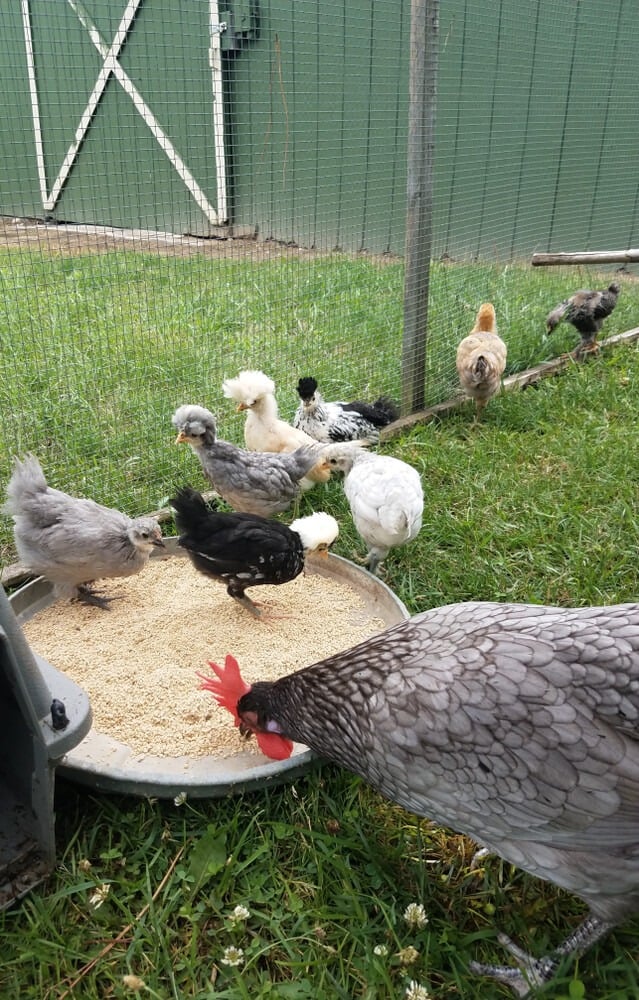
A high-quality commercial poultry feed should be the main component of your Blue Andalusian’s diet. Standard poultry feeds typically contain grains (like corn, oats, and soybeans), grit (ground oyster shell or limestone), and vitamins (calcium).
A Blue Andalusian hen will eat 100 to 120 grams of feed per day, depending on their activity level. They’re super active foragers, so they might eat less commercial feed if they have good pasture access.
Like most active birds, Blue Andalusians are particularly fond of insects, worms, and grubs. They’ll greedily demolish grasshoppers, beetles, and caterpillars with enthusiasm. They also love leafy greens, such as kale, spinach, and dandelion leaves. Scratch grains, such as cracked corn and sunflower seeds, make great treats. However, treats should only account for 20 percent of their feed intake because they are high in calories and fat.
Blue Andalusians don’t have special dietary requirements beyond typical chicken needs. Just make sure laying hens get enough calcium for those prolific white eggs. Fresh water should always be available, and these active birds drink more than lazier breeds.
Appearance And Colors

Blue Andalusians are real-world stunners! Their metallic slate-blue plumage resembles polished pewter in sunlight. They’re blue (which is really more like a pretty gray) with distinctive dark blue lacing on each feather that creates an elegant, almost regal pattern.
They sport bright red single combs, white earlobes, and clean yellow legs. Roosters are larger and more dramatic with longer, flowing tail feathers and pronounced hackle plumes. Hens are more compact but equally beautiful with their neat, tight feathering.
Here’s why they’re famously hard to breed. Blue Andalusian chickens have “hybrid characteristics.” In other words, they hatch not just Blue Andalusian chicks. But also Splash and Black Andalusian chicks! An incomplete dominant gene causes the blue color. When you breed two blue birds together, you get roughly 50% blue offspring, 25% black, and 25% splash (nearly white with blue speckling).
This genetic lottery means you can never breed true blue Andalusians from blue parents alone. Many breeders actually cross black and splash birds to get the highest percentage of blue offspring. It’s like trying to smash a moving target every generation! This tricky genetic lottery is one reason why accurate Andalusians command premium prices and why this breed remains relatively rare.
Read More – The Ultimate Guide To Building A Fox-Proof Chicken Coop – Step By Step!
Our Ballad To The Blue Andalusian Breed

From Spain’s warm plains of ancient lore, the Blue Andalusian came to soar. With plumage dressed in silver-blue, like chain mail forged in morning dew.
This flighty breed rules the scene where the sunlight makes their feathers gleam. Yet their darting eyes and piercing call, remind us they’re not tame at all.
Behold! Their colors won’t breed true. You might get black splashes or perfect blue. Their genetics play nature’s game, where breeding hopes are hard to tame.
Through centuries they’ve graced the yard. Though their mothering skills are somewhat marred. With eggs abundant, white as snow, the gifts they give help gardens grow.
The Blue Andalusian, wild and free, brings Mediterranean mystery. Their legacy soars high each day, as untamed beauty here to stay.
Read More – Why Do Chickens Sometimes Stop Laying Eggs? Here Are Ten Reasons Why – Explained!
Conclusion

Some homesteaders say that Blue Andalusians are high-maintenance divas who refuse to sit still or follow the rules. That may be true. But that’s what makes them so fun for homesteaders! Embrace the chaos. Relish the unpredictability. And let them dazzle you with their vibrant personalities, energy, and charm!
What about you?
- Have you ever seen a Blue Andalusian in real life? They’re a surprisingly rare breed!
- Would you ever consider raising a Blue Andalusian flock?
- Would you raise them for eggs? Or just for their epic, beautiful blue feathers?
Thanks for reading.
Have a great day!

